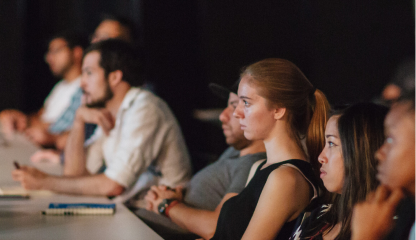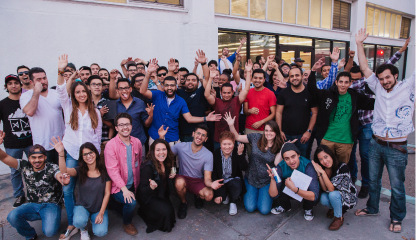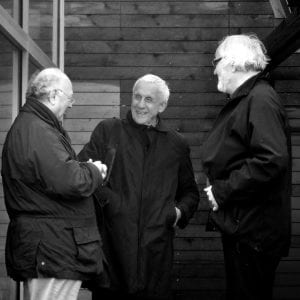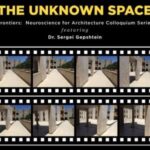By Tatiana Berger, Associate Professor of Architecture, Graduate Program, Chair of NewSchool Lecture Committee; Coordinator of the Neuroscience for Architecture Certificate Program
This year a very special guest spoke at the NewSchool of Architecture & Design Convocation on October 11: world-renowned architectural historian and critic Kenneth Frampton. Tickets for the free public lecture, Frampton’s first in San Diego, sold out in hours. Besides NewSchool faculty, students, and staff the lecture was attended by industry professionals and members of the public from throughout Southern California.
There are few people in the world who have had such a deep impact on all aspects of architecture, design, and city planning. Frampton, born in England, has worked as an architect, editor, critic, and architectural historian, teaching at Princeton since 1965 and Columbia University in New York, since 1972. He has published numerous articles and books. Design professionals in the auditorium commented: “I grew up reading Kenneth Frampton. The work of our firm is based on his writings”; “The lecture reminded me how much his thoughts about modern architecture have meant to me over the years. NewSchool should be congratulated for bringing such an accomplished speaker to our city. He is truly a legend.”
Frampton delivered an autobiographical lecture written especially for NewSchool. The lecture followed the historian’s trajectory over the last 50 years of his distinguished career, from published essays about the architect’s primary role as “builder” and the importance of regionally inflected tectonic culture, to current concerns about the responsibility of the architect and city planner in society. Frampton immersed himself in our NewSchool culture, speaking with faculty and students and taking care to understand our mission as an institution.
The following day, students had a chance to ask questions as part of a more intimate and informal event: a discussion session with Professor Frampton about selected themes from the lecture. This type of open forum reminds one of the historic conversations between Louis Kahn or Alvar Aalto and students. These are moments that stand out in our design learning experience and they are unforgettable. How exciting for our students to interact with such a great figure, who has defined perspectives on modern architecture from 1960 to this day.
Frampton’s visit to San Diego brought back memories of how I first met him in New York in 1991. I came to see him at Columbia University, where he had been professor and director of the PhD program in History and Theory for a number of years. His corner office was full of architectural models, books, and light. The room was always alive with conversation, whether it was Calatrava passing through New York with drawings or a model in his hands like a student awaiting a desk crit, or figures like Piano, Meier, or Tsien, coming in to say hello. Frampton delighted everyone with his warm and humble manner, his persistent desire to get through to the true meaning of things. Over the years, I spent many hours in that room talking about design and the social role of architecture. For me architecture became alive in these conversations.
Professor Frampton’s work and ideas have been an integral part of the NewSchool of Architecture & Design academic curriculum for years. We devote an entire quarter in Graduate Architectural and Urban Theory to the topic of “critical regionalism,” and instructors place a strong emphasis on the importance of tectonics and materiality in the design and production process. Human-centered design, an underlying theme in all of Frampton’s writings, continues to inspire and shape the pedagogy of our programs. After reading his work with NewSchool students, the real Kenneth Frampton was here, in front of us. Students commented: “I have read a lot of his texts, but the ideas sometimes seemed out of reach. Now that I have spoken to this elegant and brilliant man, I want to go back and look deeper to understand his philosophy about design.”
Kenneth Frampton was trained as an architect at the AA School of Architecture, London and subsequently worked as an architect in England, Israel, and the United States. From 1965 to 1972, he taught in the School of Architecture at Princeton University and thereafter he has served on the faculty of the School of Architecture at Columbia University in New York, where he remains Ware Professor of Architecture. His publications include Modern Architecture: A Critical History (1980), Studies in Tectonic Culture (1995), andLabour, Work & Architecture (2002) and Genealogy of Modern Architecture: Comparative Critical Analysis of Built Form (2016), among many others. Frampton is widely regarded as one of the world’s most distinguished scholars of modern architecture.









 619-684-8800
619-684-8800

